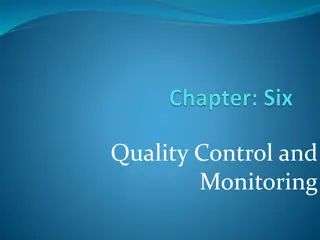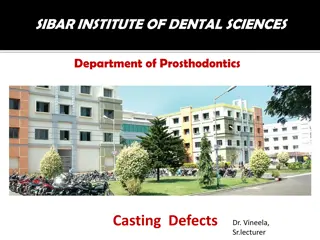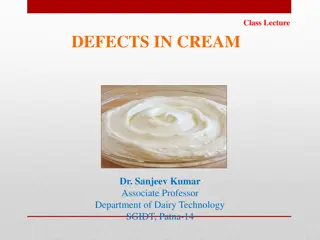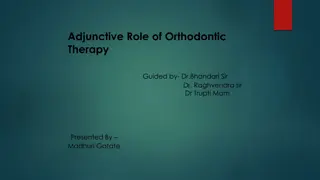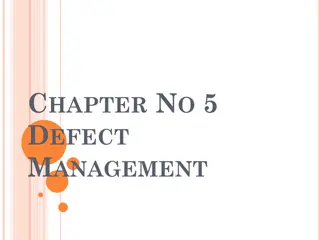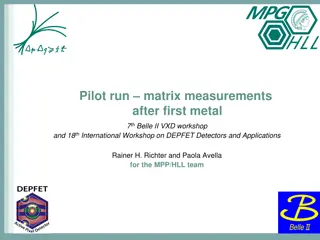Zero Defects Philosophy in Quality Management
Zero Defects Philosophy is a key principle in Total Quality Management, advocating for perfection in products and processes by eliminating defects completely. Philip Crosby popularized this concept, emphasizing that defects are never acceptable. Key concepts include "Quality is Free" and "Do It Right the First Time," promoting prevention over correction. Four Absolutes of Quality Management stress customer-defined quality, prevention over correction, zero defects as the standard, and measuring the price of nonconformance. Leadership commitment is crucial for implementing Zero Defects successfully.
Download Presentation

Please find below an Image/Link to download the presentation.
The content on the website is provided AS IS for your information and personal use only. It may not be sold, licensed, or shared on other websites without obtaining consent from the author.If you encounter any issues during the download, it is possible that the publisher has removed the file from their server.
You are allowed to download the files provided on this website for personal or commercial use, subject to the condition that they are used lawfully. All files are the property of their respective owners.
The content on the website is provided AS IS for your information and personal use only. It may not be sold, licensed, or shared on other websites without obtaining consent from the author.
E N D
Presentation Transcript
Zero Defects Philosophy: Zero Defects is a key principle within the framework of Total Quality Management. It was popularized by Philip Crosby, a quality management expert. The Zero Defects philosophy emphasizes that defects are not acceptable under any circumstances, and the goal is to achieve perfection in the products and processes. This philosophy goes beyond merely reducing defects; it aims for complete elimination.
Key Concepts of Zero Defects: Quality is Free: Crosby's principle of "Quality is Free" suggests that investing in preventing defects is ultimately more cost-effective than dealing with the consequences of defects. The costs associated with rework, scrap, customer complaints, and lost business can be much higher than the cost of implementing processes to prevent defects in the first place. Do It Right the First Time (DIRFT): This principle emphasizes the importance of performing tasks correctly from the beginning, thus avoiding the need for rework or correction. It involves training, clear work instructions, proper equipment maintenance, and a focus on excellence in every step of the process.
Four Absolutes of Quality Management: a. Quality is Defined by the Customer: The ultimate judge of quality is the customer. Understanding customer needs and expectations is crucial for delivering products and services that satisfy them. b. System of Prevention is Preferable to Correction: Instead of relying on inspection and correction after defects have occurred, the emphasis is on preventing defects from happening in the first place by designing robust processes and providing proper training.
Four Absolutes of Quality Management: c. Performance Standard is Zero Defects: The standard for quality is perfection no defects are acceptable. This requires a mindset shift from "acceptable levels of defects" to "elimination of defects." d. Measurement is the Price of Nonconformance: Tracking the cost of defects and nonconformance serves as a motivator to improve processes and reduce defects. This involves calculating the financial impact of defects on the organization.
Implementing Zero Defects: Leadership Commitment: Top management plays a critical role in setting the tone for zero defects. They must visibly support the philosophy, allocate resources, and lead by example. Employee Involvement: All employees are responsible for quality. They need to be empowered and motivated to identify and address potential defects. Continuous training and skill development are essential. Process Improvement: Analyze processes to identify areas where defects might occur. Implement measures to prevent defects, streamline processes, and eliminate sources of variation.
Implementing Zero Defects: Quality Metrics: Use metrics to track defects, rework rates, and other quality-related data. These metrics provide insights into the effectiveness of defect prevention efforts. Feedback Loops: Encourage channels for employees to report issues, suggest improvements, and share ideas for preventing defects. open communication
Implementing Zero Defects: Quality Metrics: Use metrics to track defects, rework rates, and other quality-related data. These metrics provide insights into the effectiveness of defect prevention efforts. Feedback Loops: Encourage channels for employees to report issues, suggest improvements, and share ideas for preventing defects. open communication
Benefits of Zero Defects: Higher Customer Satisfaction: Delivering products and services without defects enhances customer trust and loyalty. Reduced Costs: Prevention of defects reduces costs associated with rework, scrap, customer complaints, and warranty claims. Improved Efficiency: Streamlined processes and reduced defects lead to improved efficiency and productivity. Enhanced Reputation: Consistently delivering high-quality products builds a positive reputation in the market.
Benefits of Zero Defects: Higher Customer Satisfaction: Delivering products and services without defects enhances customer trust and loyalty. Reduced Costs: Prevention of defects reduces costs associated with rework, scrap, customer complaints, and warranty claims. Improved Efficiency: Streamlined processes and reduced defects lead to improved efficiency and productivity. Enhanced Reputation: Consistently delivering high-quality products builds a positive reputation in the market.






